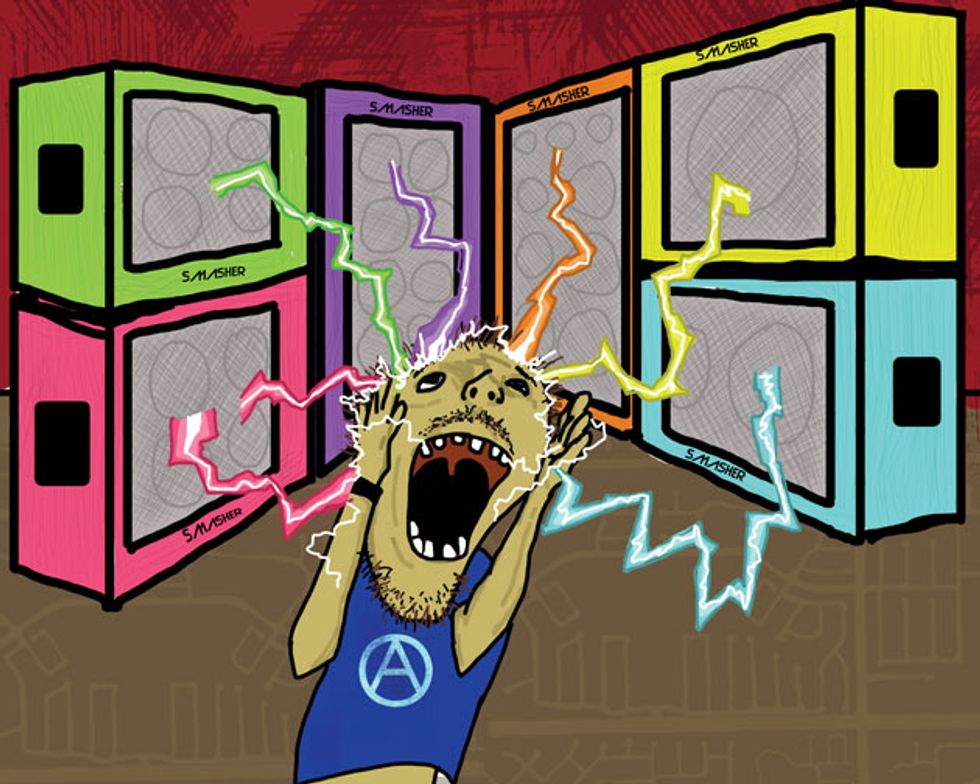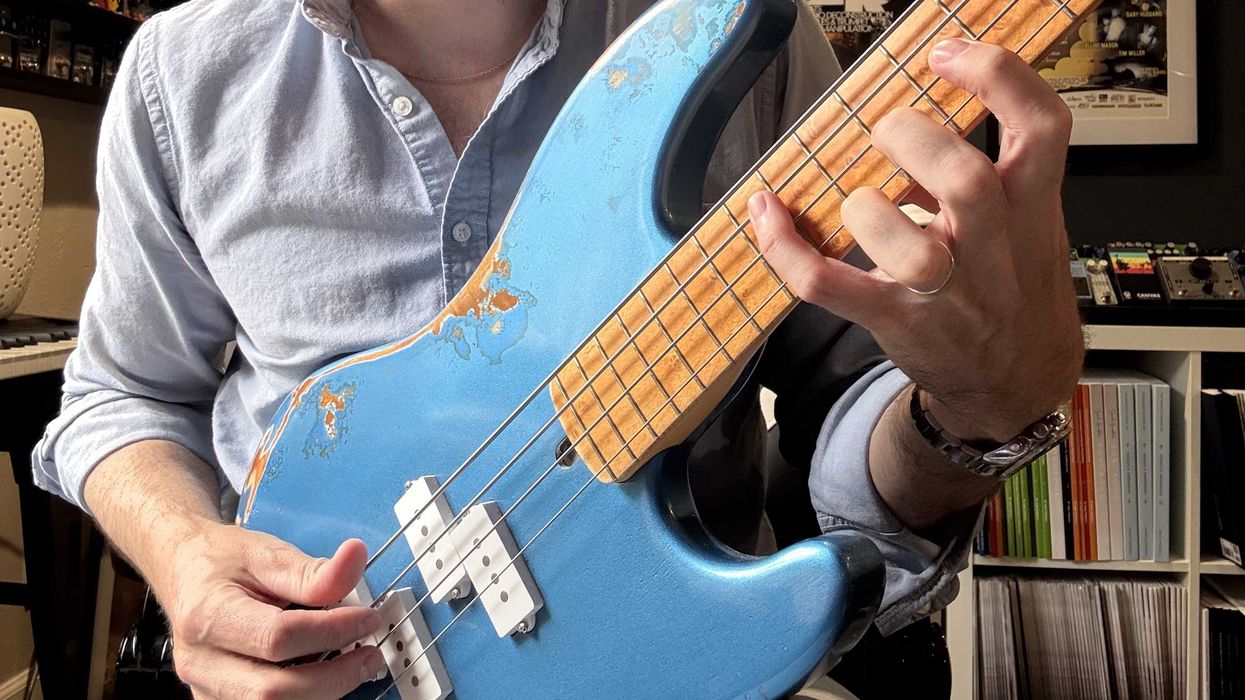Imagine if you would, a rock ’n’ roll gig. A power trio takes the stage. They begin to play the rock songs. The guitarist is obviously using the bridge pickup, because he wants to cut through the mix. Ah, but the bass player’s strings are guaranteed to punch through the mix. To further complicate things, the drummer’s cymbals are designed to slash through the mix! And if we’re talking about a club gig, you can assume the vocals are dialed in just over the point of weaponized audio.
So if everyone involved is trying to cut through the mix, we’re left with the sound of everyone trying to solo at once. We’ve all heard that kind of band, and it isn’t fun. For the sake of audiences everywhere, let’s look at the frequency ranges of our rock trio.
Range wars. Cymbals blast treble everywhere, way beyond what the human ear can perceive, every second they are moving (which is usually). The rest of the drum kit can touch almost every audible frequency, but the cymbals and kick will be the most prominent.
At the other extreme we have the bass guitar. Provided the bassist in question is not a guitar player in disguise, this instrument should be dominating the low end of the audio spectrum. This low-end range starts at around 30 Hz. Most of the range will be below 500 Hz, but there’s still a lot of overlap with the guitars and drums when we include the bass’s harmonics, etc. Since the bass and drums hold the song together, let’s give them their due and their fair share of the audio spectrum.
And finally, the guitar! Let’s just set up camp in the mids, shall we? That region is generally accepted as 400 to 5,000 Hz. Obviously, we don’t play exclusively in the middle range, because that would get pretty old pretty fast, but some emphasis would help. It provides a full sound and leaves somewhere to go. Unless you are brand-spanking new, this should be pretty basic info.
Disappearing distortion. “But what about my distorted sound?” Well, the aforementioned frequency basics still play a large part, but there are other important factors as well. If you’re using distortion effects for dynamic as well as tonal changes, your distorted volume needs to be considerably louder than your clean sound. Distortion is very exciting to the ear and brain, so the perceived volume is noticeably louder than the “real” volume. This means if you set your fuzz volume by ear to “about the same” as your clean volume, the result will ultimately seem much quieter, and you’ll drop out of the mix. I can’t tell you how many times I’ve been at a show getting my ears shredded by clanging cleans, only to have the guitar disappear when the band blasted into the chorus. It can be really helpful to see the relative volume levels in a mixer or DAW for a visual representation. Your ears can lie, but the microphone does not.
The other pitfall of distortion (did I just say that?) is the frequency response of some pedals and amps. While a mid-scooped fuzz can sound undeniably awesome at home, it may not (read: won’t) hold up in a live setting. The knee-jerk reaction to turn it up only makes matters worse, boosting the duplicate highs and lows while giving everyone tinnitus. If you must have a mid-scooped pedal or amp, an EQ pedal can help you boost those mids in a pinch.
Effects in focus. But we’re not all power trios, are we? I play with a fellow who generally eschews pedal distortion altogether in favor of a slightly crunchy amp and interesting modulation. He does this specifically because his band has a huge keyboard and vocal presence, which also sit largely in the midrange. In a live situation, the animation inherent in a guitar modulated by phasing, flanging, or even (shudder) chorus can really grab the ear without relying on more volume. A percussive style (choppy tremolo, delays, etc.) can also keep a guitar present in a crowded mix. While that guitar part might not jump out at a listener, the sharp volume changes can draw focus and add texture.
Modulation can certainly spice up a guitar, but my personal favorite is the wah. It’s a classic for a reason. A wah allows us to run the full frequency range, easily and quickly. Not only can you animate clean or dirty guitar, but in a dense mix, you can also tune in a fairly narrow frequency band and be heard clear as day without starting a volume fight. And you know who wins a volume fight? The bass player, probably, but it won’t even matter because your audience will be long gone.
It may come as a surprise to some of you, but ego is not uncommon among musicians. We all want to be heard. Why else would I buy a cab that is taller than my wife? We can either get into a volume fight, or we can figure out how to work within the full frequency range of the band and allow space for each sound. When we put some thought into what else is going on, we can find a way to sit happily in the mix instead of cutting it to bits.


















